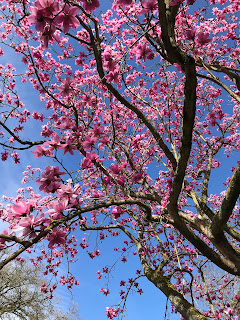Hidcote Manor, in Gloucestershire, had been part of the Bradenstoke Priory estate, which in turn was based in Wiltshire. It reflects how wealthy the medieval church was and why Henry VIII dissolved the monasteries in 1539. In the C17th Hidcote became a farmhouse and in 1907 was sold to Lawrence Johnston, son of the fabulously wealthy American socialite Gertrude Winthrop; for her, £7,200 was but a drop in the ocean.
As a youth, Lawrence Johnston had drifted across Europe, somewhere along the way becoming a Catholic, falling in love with France, and Edith Wharton, and becoming at last a naturalised Englishman. He joined the Imperial Yeomanry to fight in the Boer War (no record though of him ever meeting my grandfather, Sergeant John Keyton).
Lawrence Johnston
After the war, he tried a spot of farming in Northumberland before settling in Hidcote with a domineering mother. There, he developed a grand passion for gardening, later scouring the world for new and exotic plants. His motto was always ‘Plant only the best form of plant’ and ‘Plant thickly’ on the principle, presumably, that nature hates a vacuum and would otherwise fill it with weeds.
When World War I broke out in1914, he joined the Northumberland Fusiliers, was wounded, gassed and once mistakenly left for dead on the field.
Johnston with his team of gardeners
As soon as the war ended, he returned to his beloved Hidcote and spent so prodigiously his mother, who held the purse strings, left his inheritance in the hand of ‘trustees’ so in a sense he remained a dependent for life.
We were there on a bright March day when only hellebore, daffodils and magnolia were in bloom. As the video at the end of this post will show, it is heaven on earth in Summer and Spring. We just glimpsed it's architecture
In 1930, and now in his sixties with a gas damaged lung, he toured western China in his search for new and exotic plants. Accompanying him was George Forrest of Edinburgh Botanic Garden. It was an unhappy partnership. Johnston fell ill and Forrest developed an active dislike of him:
‘Had I raked (the entire country) with a small tooth comb I couldn’t have found a worse companion than Johnston…Johnston is not a man, not even a bachelor, but a right good old spinster spoilt by being born male.’
It's an odd comment to make of a man who fought in two wars, was badly wounded and in his sixties embarked on a hazardous expedition to China, and yet, how do you define a man?
How do you define a man? I was struck by this on entering the men’s toilets in the Hidcote estate and encountered the unexpected. Instead of the tacky but perhaps more traditional machine dispensing Durex with their lurid logos and names, I came across this.
I have no idea whether these were also on offer in the women’s toilets but at the time I paused and wondered what Lawrence and Gertrude would have thought, and whether such a thing would be permitted in the Garrick Club presently under siege?
But back to the indefatigable Lawrence. By the 1940s and with Lawrence Johnston well in his 70s, he began to think of his future and that of his garden. After much hemming and hawing the National Trust was persuaded to acquire it in 1948 and have kept it ever since.
A longish video but well worth watching especially on a gloomy day. Around 19.40 -- 20.20 mins in you'll see the formidable Gertrude and imagine her views on present cultural mores

















2 comments:
The video of the garden is breathtaking. What month would you say most of it would be in bloom?
Hard to say, Maria. Late June, perhaps before roses lose their first flush. Most plants should be out by then, but I suspect he designed it for colour through spring to autumn
Post a Comment